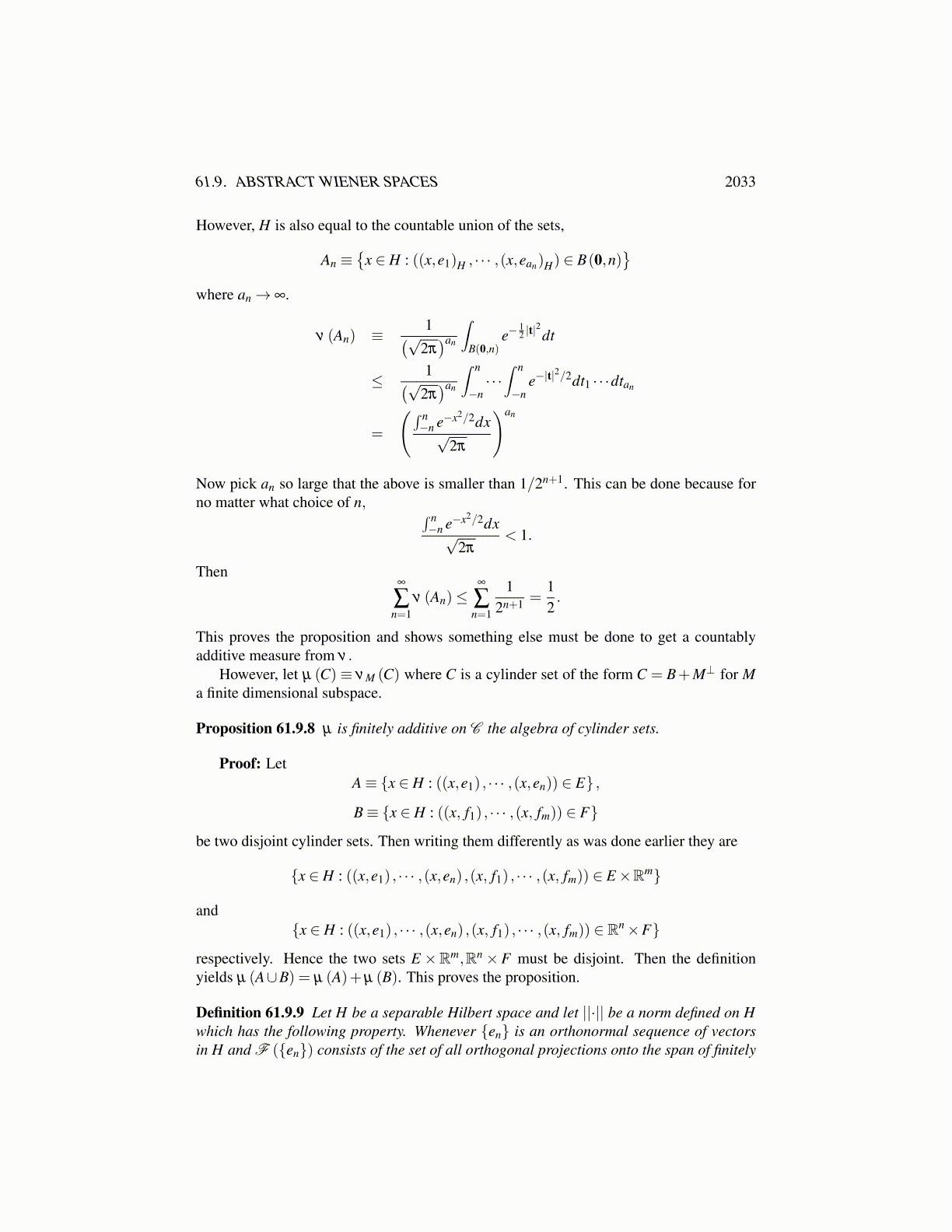
61.9. ABSTRACT WIENER SPACES 2033
Lemma 61.9.6 The above definition is well defined.
Proof: Let { fk} be another orthonormal set such that for F,G Borel sets in Rn,
A = {x ∈ H : ((x,e1) , · · · ,(x,en)) ∈ F}= {x ∈ H : ((x, f1) , · · · ,(x, fn)) ∈ G}
I need to verify ν (A) is the same using either { fk} or {ek}. Let a ∈ G. Then
x≡n
∑i=1
ai fi ∈ A
because (x, fk) = ak. Therefore, for this x it is also true that ((x,e1) , · · ·(x,en))∈ F. In otherwords for a ∈ G, (
n
∑i=1
(e1, fi)ai, · · · ,n
∑i=1
(en, fi)ai
)∈ F
Let L ∈L (Rn,Rn) be defined by
La≡∑i
L jiai, L ji ≡ (e j, fi) .
Since the{
e j}
and { fk} are orthonormal, this mapping is unitary. Also this has shown that
LG⊆ F.
SimilarlyL∗F ⊆ G
where L∗ has the i jth entry L∗i j = ( fi,e j) as above and L∗ is the inverse of L because L isunitary. Thus
F = L(L∗ (F))⊆ L(G)⊆ F
showing that LG = F and L∗F = G.Now let θ et≡∑i tiei with θ f defined similarly. Then the definition of ν (A) correspond-
ing to {ei} is
ν (A)≡ 1
(2π)n/2 (det(θ ∗eQθ e))1/2
∫F
e−12 t∗θ∗eQ−1θ etdt
Now change the variables letting t = Ls where s ∈ G.From the definition,
θ eLs = ∑j∑
i(e j, fi)sie j
= ∑j
(e j,∑
ifisi
)e j = ∑
j
(e j,θ f s
)e j
and soLs =
((e1,θ f s
), · · · ,
(en,θ f s
))= θ
∗eθ f s